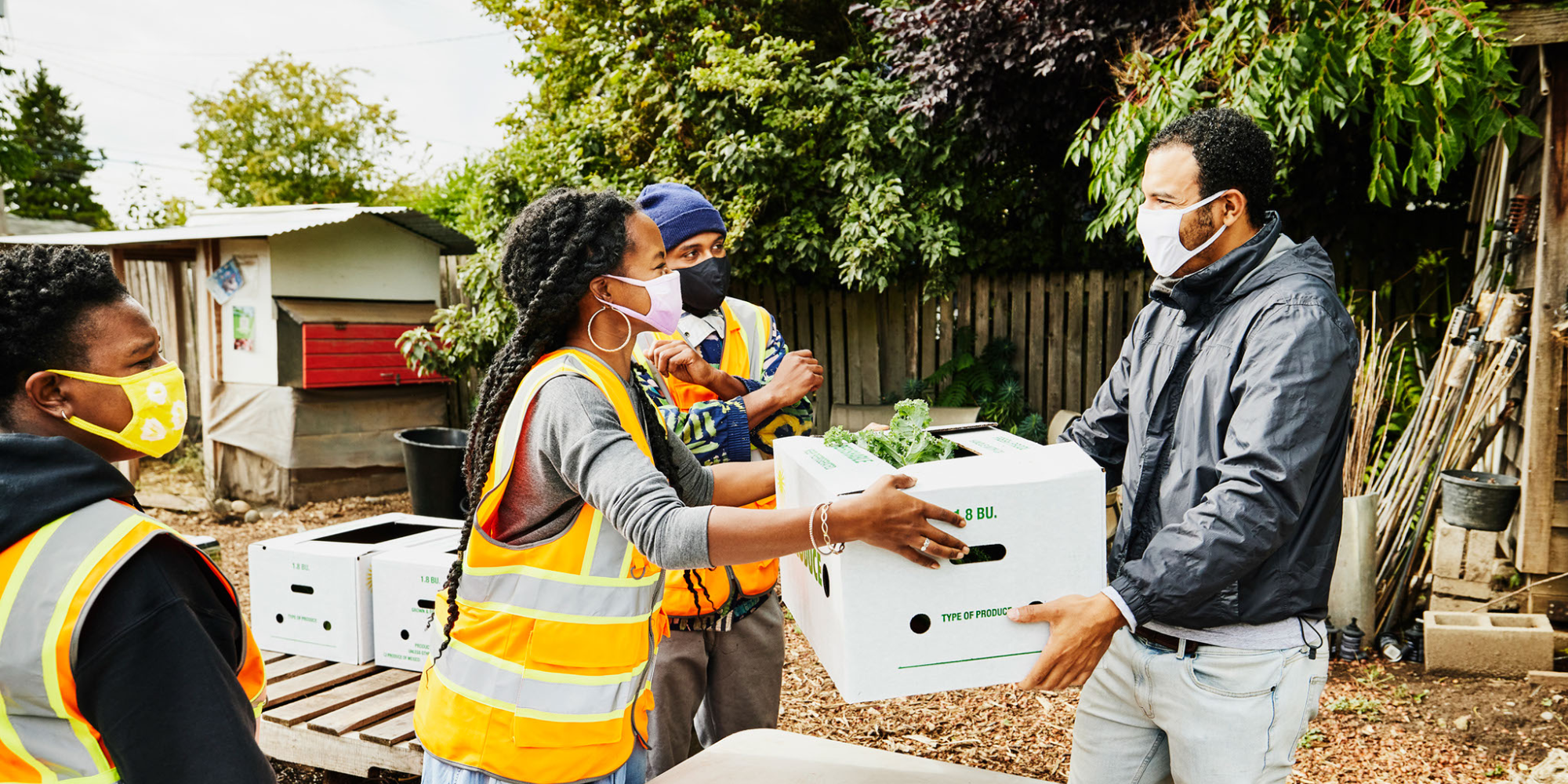NLC is committed to providing cities, towns and villages with the tools they need to Respond, Recover and Rebuild, and has released ten new policy briefs meant to provide clear, actionable steps that municipal leaders can take to respond to the impact of COVID-19 in their communities.
Ensuring access to food for all population groups – including children, parents, seniors and students of all ages – has been a key concern for city leaders since the start of the pandemic. More than 37 million people across the U.S. were food-insecure before the pandemic; that number is estimated to have increased by 17 million since then. Local leaders can create or revisit city food access to reduce hunger.
- Create or strengthen community food intake request system.
- Example: The City of Lincoln, NE added information about food assistance to MyLNK, a comprehensive city web app for services, to make sure that residents can find the information they needed about food in one place.
- Increase access to food for high-need populations, including people of color, low-income residents, youth, seniors and college students.
- Example: The City of Little Rock, AR is providing children and youth with three meals at sites across the city. The city also expanded this service to lunch on the weekend as well.
- Example: As a part of its broader campaign to fight hunger Think Orange, the City of Winston-Salem, and Winston-Salem State University developed an on-campus food back to serve the 57 percent of students identified as food-insecure.
- Leverage partnerships to connect residents to federal nutrition benefits.
- Example: Where possible cities can work with their school district to support the distribution of the Pandemic Electronic Benefit Transfer (P-EBT) program and support caregivers and parents of children eligible to receive meals under the National School Lunch Program to access these benefits.
- Support restaurant workers and local producers.
- Example: The City of Asheville, NC suspended portions of its city code to allow mobile food vendors to operate in otherwise unpermitted locations during its declared state of emergency.
- Example: Encourage the hiring of restaurant workers who have been laid off to increase staffing of community kitchens or other vendors that are producing meals for youth, homebound older adults, and other at-risk communities.
- Support and streamline the transportation of food.
- Example: City leaders are also forming public-private partnerships to get more food to their residents. The City of Rancho Cordova, CA provides free grocery delivery to residents living within the city via their Rancho Delivers program, a partnership between the city and two supermarkets where the city covers the delivery costs.
- Example: The City of San Francisco, CA created a call center to provide food deliveries to people who are COVID-19-positive or awaiting test results while in isolation or quarantine. “For people facing food insecurity, this pandemic has made the challenges they face even more severe. For people in quarantine, they often don’t have a network of people to bring them food. We’re supporting those in need during this difficult time,” San Francisco Mayor London Breed tweeted.
Learn More
See NLC’s COVID-19 Response Principles, and specific brief: Supporting Nutrition Programs and Emergency Food Assistance to Prevent Hunger.












